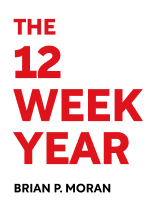

This article is an excerpt from the Shortform book guide to "The 12 Week Year" by Brian P. Moran. Shortform has the world's best summaries and analyses of books you should be reading.
Like this article? Sign up for a free trial here .
Do you often feel like there isn’t enough time in a day to accomplish everything you’ve planned to do? Have you tried the time blocking method?
The time blocking method is a time management technique that integrates the functionality of a calendar with a to-do list. It involves chunking a period of time—typically a day or week—into smaller segments that are scheduled for specific tasks.
Keep reading to learn about the time blocking method.
What Is the Time Blocking Method?
You must invest your time wisely to accomplish your tasks successfully. You, like everyone else on the planet, are used to feeling like you just don’t have enough time to do everything you want to do. But the truth is, this belief is usually a defense mechanism against facing the truth—you don’t manage your time well. Effective time management is often the difference between average achievers and high achievers.
People who have accomplished amazing feats in business, sports, or other arenas do not have more time than you do. They merely made better choices about how they spent their time, which is the foundation of good time management. Your choices from one minute to the next dictate how well you use your time.
Studies show that most people waste more valuable work time in a day than they realize. This time is wasted dealing with the various distractions people and technology throw your way while you’re trying to work. One study found it took 15 minutes for workers to get back to their tasks when they stopped to check emails or text messages. Another found that 28% of the average employee’s day is spent managing interruptions in workflow and time taken to refocus. In a 40-hour work week, that’s 11 hours of time wasted.
When you allow distractions to flow in and out of your workday, you leave the success of your efforts to chance. Your day controls you, rather than you controlling your day. You respond to whatever requires your attention in the moment and waste precious energy and mental power on activities that don’t matter. This makes it so much harder to concentrate when you turn back to your real work.
Part of the problem is the fear and effort that come with working on high-payoff activities. Those tasks that challenge us the most require energy and intense focus, and you may feel uncomfortable pushing past your familiar limits. But those high-payoff tasks are also what will lead to amazing results in the future.
You must be willing to choose strategic actions over comfort if you truly want to be a success. You will only achieve your future vision if you sacrifice comfort. Your focus needs to shift to the most important tasks that serve your goals. And you must protect the time you work on those tasks.
Organize your day around the priority activities that will lead to your desired results. You know when you’re procrastinating or wasting time, so you must learn to say “no” to distractions and “yes” to active focus. One way to do this is to use the time blocking method to allocate your time throughout the day.
The Three Blocks Composing Peak Performance
The time blocking method is all about maximizing your performance time—the periods of total productivity. You can separate your day into specified periods of activity to gain the full advantage of your performance time.
Block 1: Strategic Block
You have the ability to concentrate for three hours without distraction each week. When you plan your weekly strategy, build in this three-hour block and commit to doing only priority tasks during this time. Don’t take phone calls, check emails, or read the news. Don’t visit with co-workers or daydream about lunch. Focus completely on the task at hand for three hours to harness the full power of your creative and intellectual capacities.
Block 2: Buffer Block
You waste more time trying to eliminate distractions completely than if you set aside time to be distracted. A buffer block is a set amount of time dedicated to miscellaneous activities that take your attention away from work. When you group these activities into one chunk of time, you reduce frustration with constant interruptions and alleviate the stress of having these tasks lingering in the background.
Block 3: Breakout Block
Success is not just about working hard all the time. You must allow your mind to rest and recharge so you can always work with your fullest creative and intellectual capacities and focus. If you work without rest, you’ll burn out and diminish your cognitive capacity. Schedule at least three hours of downtime each week. Step away from your work and engage in something relaxing and frivolous. You will be re-energized and ready to tackle more when you return.
What Happens Within Each Block
The following are some strategies for how to spend each performance block efficiently:
Strategic Block: This block is dedicated to accomplishing the tasks that lead to your vision. You should take a few minutes to reflect on your vision to connect emotionally with it and review your progress in working toward it. Take the next few minutes to review your measure data to see where you’re growing and still need to do more. If there are areas still lagging in productivity, take a few minutes to diagnose the problem. After these tasks are done, you should have 2 to 2.5 hours left to work on the necessary tasks for that week.
Buffer Block: Use this time to check emails, call family or friends, hold office hours for your staff, respond to messages, read the news, or do any other activity that threatens to interrupt your workflow.
Breakout Block: Spend time with family and friends, go hiking, read for fun, watch TV, or take a bath. These three hours are your time to get away from work and re-energize your body, mind, and soul.
Design Your Model Week Using the Time Blocking Method
First, make time at the beginning of the week for reflection and planning. Then, pencil in your strategic block on a day when you know you’ll have the time to focus for three hours on your priority tasks. Next, schedule your 30-minute or hour-long buffer blocks for each day. Scheduling these at the same time will train your brain to switch focuses without effort. If you know you have a lot of miscellaneous activities each day, schedule one in the morning and one in the afternoon.
You want to schedule your breakout block next, but a word of caution: Until you’ve successfully operated within the confines of your 12-week plan long enough to meet your goals each week, you might consider scheduling a breakout block every other week or once a month. This strategy can help prevent a loss of focus until you trust yourself enough to stick to your schedule.
After your blocks are scheduled, add in all of the other important tasks you have for the week, whether personal, professional, or obligatory. These may include lunch meetings, sales calls, individual check-ins with your employees, picking your children up from school, or dinner at your in-laws. Whatever you know is coming that week, put it on the schedule.
When you look at your model week, you will see little time left over. Whereas this reality may feel overwhelming, you’ve set a commitment to work through the process of reaching your vision to reach your full potential. You must accept that sacrificing free time and comfort are required for success.
Common Errors
Avoid these common errors for allocating your time using the time blocking method:
- You fall back into the habit of letting your day control you when you feel overwhelmed.
- You take on too many tasks during your strategic time.
- You entertain distractions outside the buffer block.
- You assume working hard is the same thing as producing exceptional results.
- You don’t write your model week down.
- You create conflicts because you didn’t put your model week into your calendar.

———End of Preview———
Like what you just read? Read the rest of the world's best book summary and analysis of Brian P. Moran's "The 12 Week Year" at Shortform .
Here's what you'll find in our full The 12 Week Year summary :
- How to create a structured plan to rapidly accomplish goals
- Why annual goals don't work
- How to create urgency by working in 12-week increments






